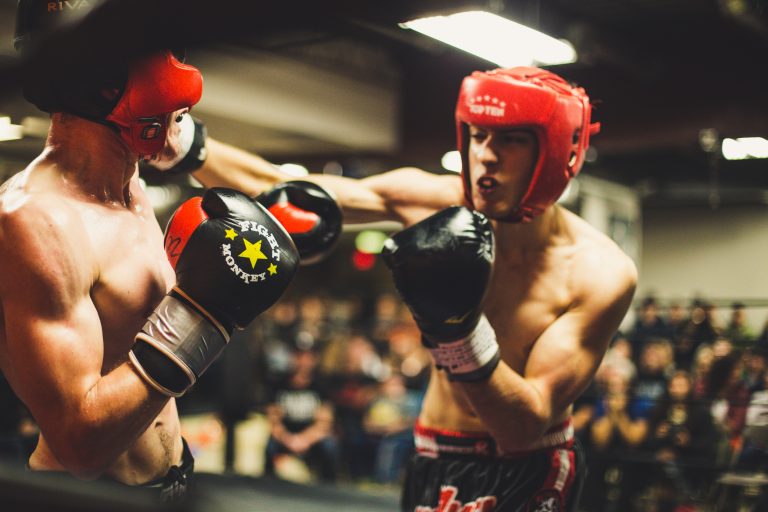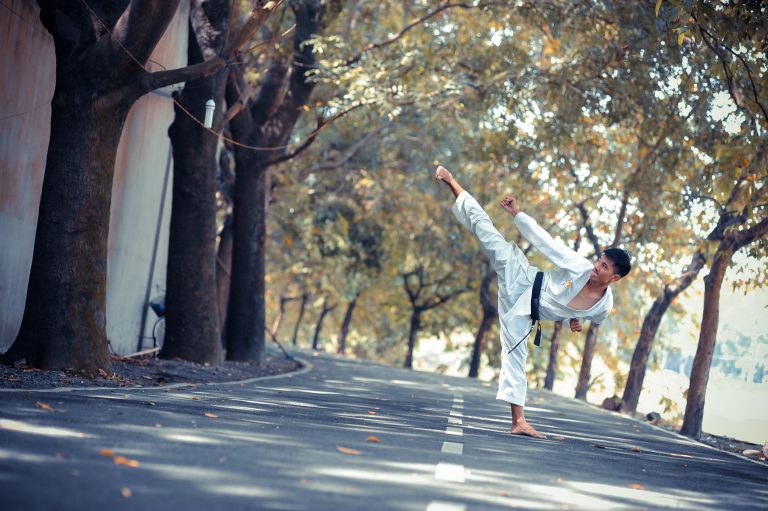Is Kumite The Supreme Test Of Skill In Karate?
Karate is an ancient martial art that has been practiced by millions of people around the world for centuries. In the modern era, karate has become a sport that is practiced competitively and recreationally. One of the most important aspects of competitive karate is kumite, a form of sparring that tests the martial art skills of competitors.
In this blog post, we’ll explore the question: Is kumite the supreme test of skill in karate? We’ll discuss the history of kumite, the rules of kumite, and the benefits of kumite as a measure of karate skill. We’ll also look at how kumite can be used to measure growth and progress in a karate student’s journey, as well as its potential as an assessment tool for instructors.
What is Kumite?
Kumite (組手) is a form of sparring that is practiced in karate, judo, and other martial arts. In karate, it is used to measure the martial art skill of the individual practitioner and is one of the main components of competitive matches. Kumite is used in tournaments and competitions and consists of two participants simultaneously performing pre-authorized karate techniques against one another.
It’s important to note that different organizations and standards use slightly different interpretations of what constitutes kumite. Generally, however, it is defined as two people engaging in martial arts techniques in an atmosphere of mutual respect. In competition, it is often conducted in two rounds; the first for technique and defense, and the second for attack.
History Of Kumite
The origins of kumite can be traced to early 19th century Okinawa, Japan. At that time, Okinawa was still an independent country and known for its martial arts prowess. Kumite was developed by Okinawan sanshin master Matsumura Sokon, who had been trained to use both fencing-style weapons and barehanded combat techniques.
In addition to its historical roots in Okinawa, kumite has also been influenced by judo and other martial arts developed in Japan. It was popularized as a form of training and competition during the Taisho period (1912-1926). The emergence of sport karate in the 1960s further cemented its status as a competitive event.
Rules Of Kumite
Kumite can be loosely divided into two main categories: free variation or free style, and restricted variation or restricted style. Both styles involve two opponents engaging in pre-authorized techniques,but there are some subtle differences between the two variants.
In free variation, there are no specific rules or restrictions on timing or the type of technique used. This allows for a wide range of techniques and combinations to be used, which makes it more interesting for spectators.
In restricted variation, on the other hand, there are specific rules as to when and how a technique should be performed. This allows for less versatility from the participants, but provides a more predictable outcome since the techniques are pre-determined.
The Benefits Of Kumite
Kumite offers numerous benefits to those interested in developing their skills in karate. For starters, it provides an opportunity to practice techniques in a safe and controlled environment. As with any activity, practicing and honing your skills is essential to improving and having success in a martial arts competition.
Kumite can also be used as both an assessment tool by teachers and as a measure of growth by students. When used as an assessment tool, instructors can identify areas where students need to improve and can adjust their instruction accordingly.
For students, participating in kumite can help them assess their progress over time. By comparing their performance over time, students can identify areas they need to work on or areas they have made progress in. They can also use their experience in kumite to evaluate their opponents’ strengths and weaknesses and use this information to inform their strategies going forward.
Is Kumite The Supreme Test Of Skill In Karate?
It’s clear that kumite plays an important role in karate competition and can be used by both instructors and students to measure progress and assess skill level. But is it the supreme test of skill in karate? While it can offer valuable insights into a person’s martial arts ability, it’s important to remember that there are other elements that must be taken into consideration.
Other Considerations
In addition to kumite, there are other aspects of karate that must be taken into account when assessing someone’s overall skill level. These include technical mastery, such as form (kata), stance (dachi) and technique (bunkai), as well as mental attributes like focus, patience, and determination. Mastering these elements is key to becoming a skilled practitioner and competitor in karate.
Furthermore, there are other activities that can help one hone their skills such as weapons training (bo kumite), paired drills (ikkyo) and solo drills (hojo undo). These activities require input from both the instructor and student in order to reach their full potential, which makes them powerful vehicles for learning and improving one’s skills.
Conclusion
Ultimately, while kumite may be a good measure of martial arts skill in certain contexts, it should not be seen as the definitive test of martial arts proficiency. Rather, assessment should draw on a variety of methods such as technical mastery, mental aptitude, paired drills, and solo training in order to build up a comprehensive understanding of a person’s martial arts skillset.
Is Kumite The Supreme Test Of Skill In Karate?
Karate is a traditional martial art that originated in Okinawa, Japan, and has now spread worldwide. It involves a set of techniques and movements that are primarily used for self-defense. Karate has gained much popularity throughout the world not only as a means of self-defense but also as a sport. The sport of karate comprises of different styles, one of which is Kumite.
Kumite is a form of karate that involves sparring with an opponent using various techniques such as punches, kicks, strikes, and throws. Kumite is popularly recognized as a sport that allows the participants to put their skills to the test in a safe and controlled environment. However, the question that arises is, ‚Is Kumite the supreme test of skill in karate?‘ Let’s answer some frequently asked questions about this topic.
What Is Kumite?
Kumite is a Japanese term that means ‚grappling hands.‘ It is a form of karate where two opponents spar with each other using various techniques. There are different types of Kumite, including free-sparring, semi-free sparring, and pre-arranged sparring. In free-sparring, the participants have the freedom to use any technique to score points, while in semi-free sparring, the participants have to follow some rules and follow a set pattern.
Is Kumite The Supreme Test Of Skill In Karate?
Kumite is a significant test of karate skills but is not the only test. Karate involves three major components, namely Kihon, Kata, and Kumite. Kihon involves practicing basic techniques such as punching, kicking, and blocking. Kata is a series of movements and techniques performed in a set pattern. Kumite is sparring with an opponent.
All three components are crucial in testing a karate practitioner’s skill. Therefore, it wouldn’t be right to say that Kumite is the supreme test of skill in karate. However, Kumite is an integral part of karate, and it tests a practitioner’s skills, speed, timing, and reflexes.
Is Kumite Dangerous?
Kumite can be dangerous if not practiced under proper guidance and safety measures. The safety of the participants is given utmost priority in Kumite. Participants must wear protective gear such as gloves, helmets, mouthguards, and body armor to minimize the risk of injury. Additionally, participants should adhere to the rules and regulations set up by the competition organizers.
Is Kumite Suitable For Children?
Kumite is not suitable for young children. Children must first learn the basic techniques of karate and practice them under proper guidance. Kumite involves sparring, and children may not have the strength or control needed to participate safely in Kumite.
However, there are several forms of Kumite that are suitable for children, such as pre-arranged Kumite. In pre-arranged Kumite, a set of techniques is practiced with a partner, and the children learn to control their movements and increase their accuracy. This form of Kumite is safe and helps children develop their karate skills.
What Are The Benefits Of Kumite?
Kumite offers many benefits to its practitioners, such as:
- Improves reflexes and coordination: Kumite requires quick movements and reflexes, which helps improve coordination and reflexes.
- Increases physical fitness: Kumite involves physical movement and aids in increasing physical fitness, strength, and stamina.
- Improves self-defense skills: Kumite allows practitioners to apply their techniques in a real-life situation, thus improving their self-defense skills.
- Boosts confidence: Practicing Kumite helps boost confidence and self-esteem as it allows the practitioners to test their skills and abilities against an opponent.
Conclusion
In conclusion, Kumite is an essential component of karate, but it’s not the sole test of skill. Karate comprises three significant components, including Kihon, Kata, and Kumite, and each component is crucial in testing a practitioner’s skill. Kumite offers many benefits to its practitioners, such as improving physical fitness, reflexes, coordination, and self-defense skills. However, it can be dangerous if not practiced under proper guidance and safety measures. In summary, Kumite is a vital form of karate that offers many benefits to its practitioners and is suitable for individuals who have mastered the basic techniques of karate.
Inhaltsverzeichnis






